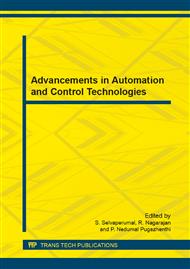[1]
Sriram Cherukuri , Krishna K Venkatasubramanian , Sandeep K S Gupta , BioSec: A Biometric Based Approach for Securing Communication in Wireless Networks of Biosensors Implanted in the Human Body, , IEEE International Conference on Parallel Processing, (2003).
DOI: 10.1109/icppw.2003.1240399
Google Scholar
[2]
Ari Juels and Martin Wattenberg, A Fuzzy Commitment Scheme, Proceedings of 6th ACM Conference on Computer and Communication Security, (1999).
DOI: 10.1145/319709.319714
Google Scholar
[3]
Carmen C.Y. Poon and Yuan-Ting Zhang, Using the Timing Information of Heartbeats as an Entity Identifier to Secure Body Sensor Network, IEEE Transactions on Information Technology in Biomedicine, Vol. 12, No. 6, November (2008).
DOI: 10.1109/titb.2008.926434
Google Scholar
[4]
Zhang GH, Poon CC and Zhang YT, A fast key generation method based on dynamic biometrics to secure wireless body sensor networks for p-health, IEEE Annual International Conference of Engineering in Medicine and Biology Society (EMBC), (2010).
DOI: 10.1109/iembs.2010.5626783
Google Scholar
[5]
Francis Minhthang Bui and Dimitrios Hatzinakos, Biometric Methods for Secure Communications in Body Sensor Networks: Resource-Efficient Key Management and Signal-Level Data Scrambling, EURASIP Journal on Advances in Signal Processing, (2008).
DOI: 10.1155/2008/529879
Google Scholar
[6]
Ari Juels and Madhu Sudan, A Fuzzy Vault Scheme, Designs, Codes and Cryptography, Vol. 38, No. 2, Pp. 237-257, (2006).
DOI: 10.1007/s10623-005-6343-z
Google Scholar
[7]
Venkatasubramanian.K. K, Banerjee. A and Gupta S.K. S, PSKA: Usable and Secure Key Agreement Scheme for Body Area Networks, IEEE Transactions on Information Technology in Biomedicine, Vol. 14, No. 1, January (2010).
DOI: 10.1109/titb.2009.2037617
Google Scholar


